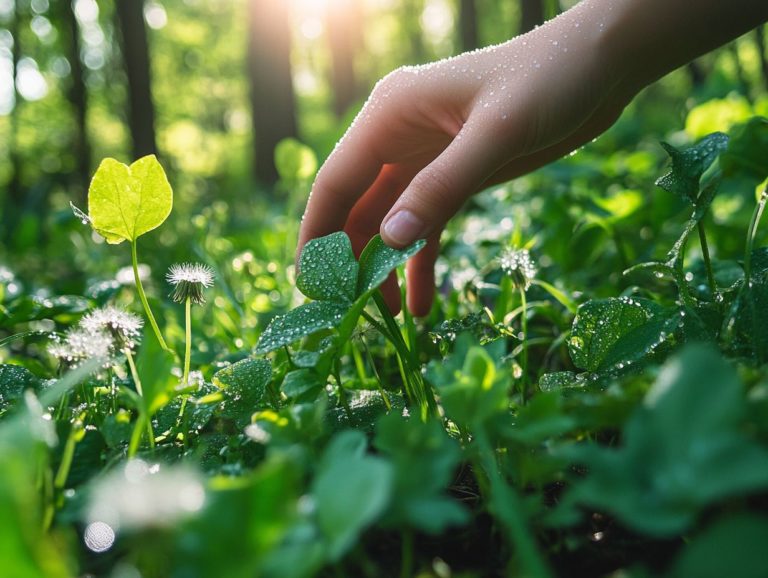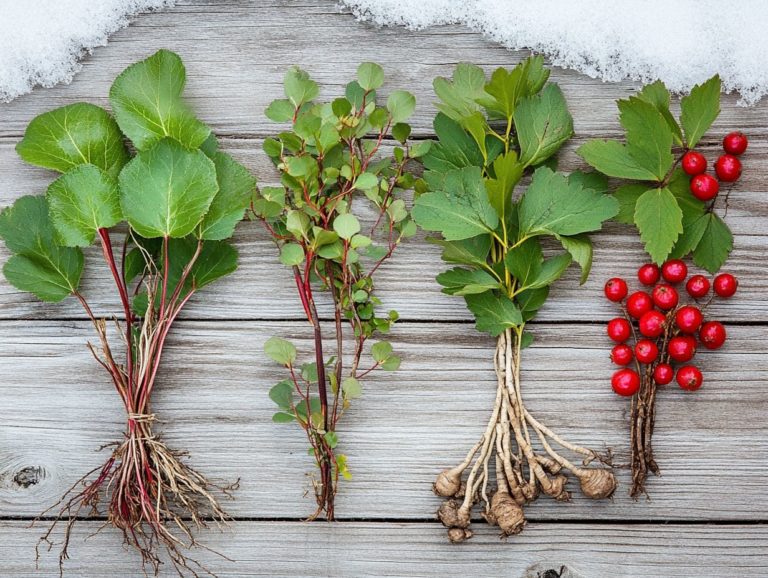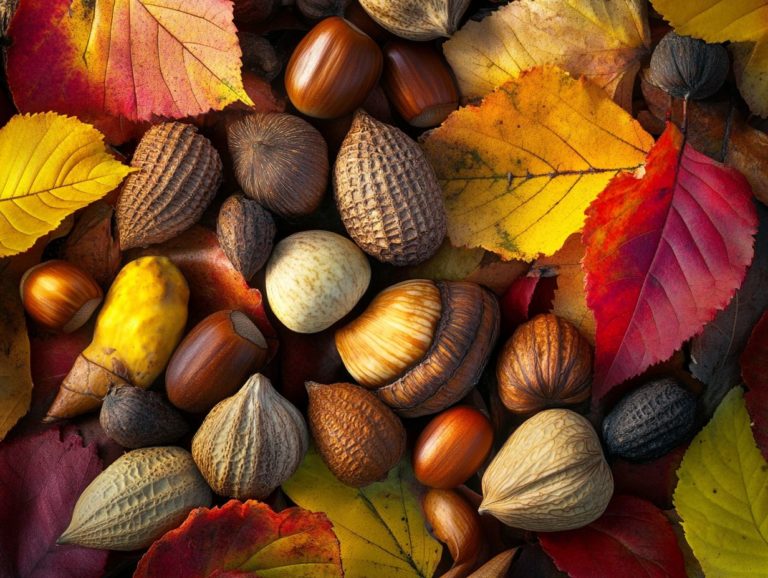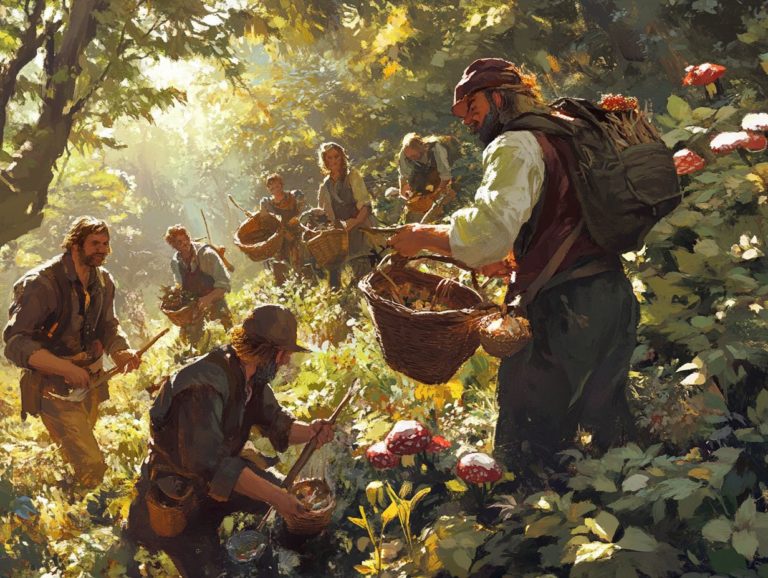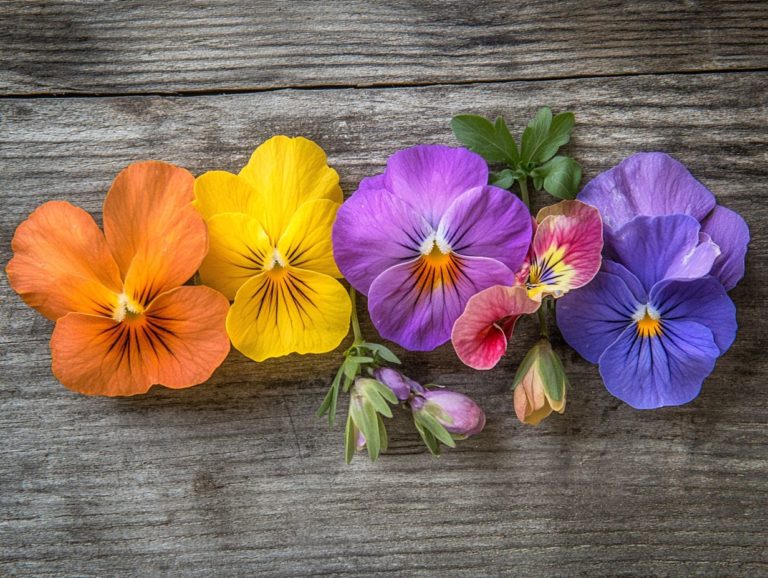5 Essential Plants to Forage in Spring
Spring breathes life into nature, and foraging (the act of searching for and gathering wild food) offers a wonderful opportunity to immerse yourself in the great outdoors while uncovering edible treasures, from miner s lettuce to wild violet. Get ready to dive into the exciting world of foraging!
Consider five essential plants that flourish during this vibrant season: dandelions, stinging nettles, wild garlic, chickweed, fiddleheads, and garlic mustard. You can also explore best practices for safe harvesting and discover innovative ways to incorporate these wild greens into your culinary creations.
Contents
- Key Takeaways:
- 1. Dandelion
- 2. Stinging Nettle
- 3. Wild Garlic
- 4. Chickweed
- 5. Fiddleheads
- What Is Foraging and Why Is It Beneficial?
- Frequently Asked Questions
- What are the 5 essential plants to forage in spring?
- Why should I forage for plants in spring?
- What are the benefits of foraging for these 5 essential plants?
- Can I forage for these plants in my backyard or do I need to go into the wilderness?
- Is it safe to forage for plants in the wild?
- What are some ways to use these 5 essential plants in cooking?
Key Takeaways:
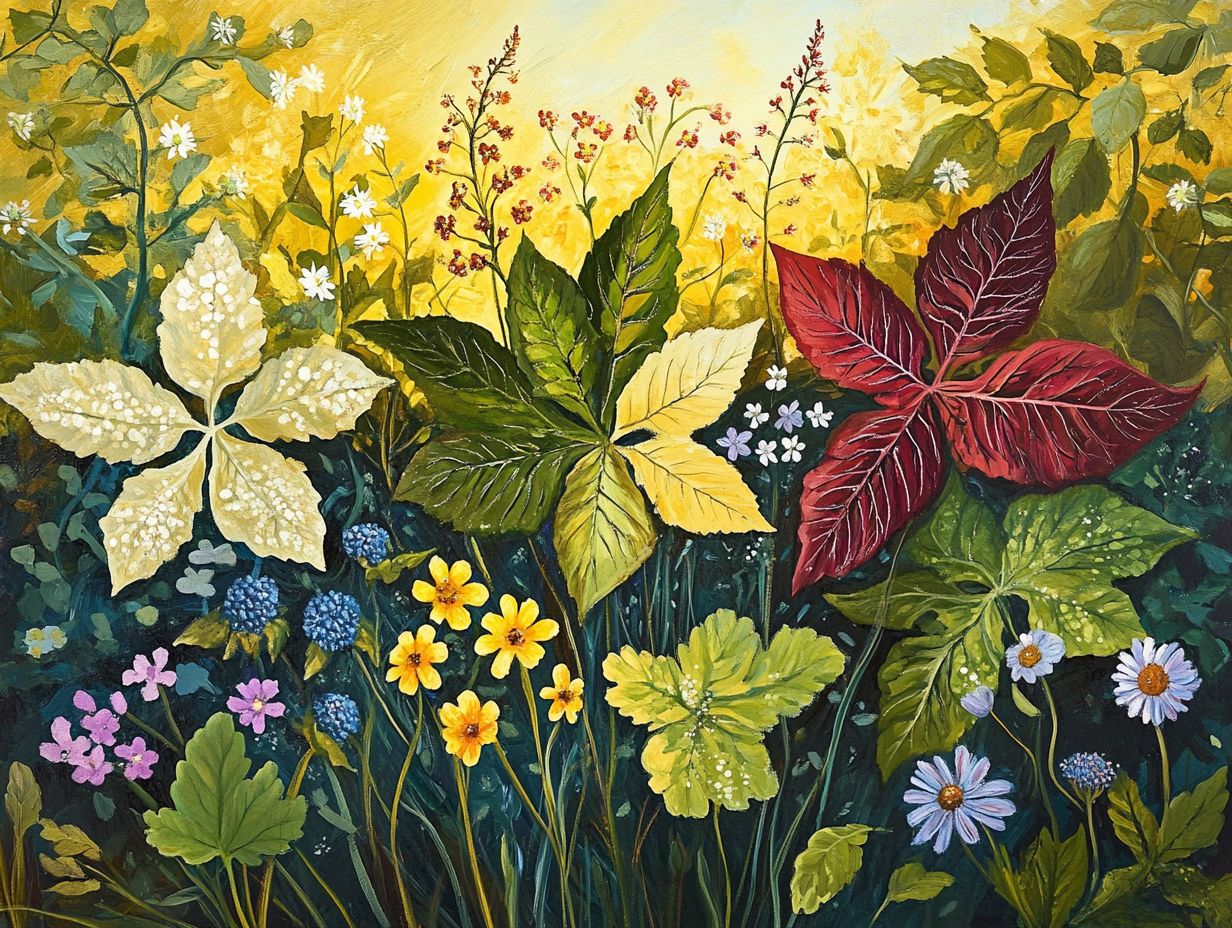
- Dandelions are nutritious and easy to find in spring.
- Stinging nettle is rich in nutrients and flexible in dishes.
- Wild garlic enhances many recipes with its robust flavor.
1. Dandelion
Dandelion, often dismissed as just a common weed, is actually an extraordinary edible plant that flourishes in spring, alongside other wildcrafting favorites like plantain and yarrow. It offers a wealth of culinary and medicinal benefits.
From its vibrant yellow flowers to its nutritious leaves and roots, every part of the dandelion can be utilized in foraging and wildcrafting, making it a valuable asset for anyone looking to explore the fascinating world of edible plants and natural remedies.
You can harvest the leaves fresh for salads or brew them into a soothing tea, renowned for its detoxifying properties. The flowers can be transformed into delightful syrups or wine, adding a unique twist to various dishes.
As for the roots, when roasted, they become a caffeine-free alternative to coffee. This flexible plant not only boasts an impressive nutrient profile, rich in vitamins A, C, and K, but it has also been celebrated in traditional medicine for its potential to support digestion and enhance liver health.
By incorporating dandelion into your diet, you can fully embrace its many benefits while reconnecting with the earth’s abundant offerings.
2. Stinging Nettle
Stinging nettle is truly a powerhouse of nutrition and medicinal properties, often found during the vibrant days of spring foraging. When you prepare its leaves correctly, they can be transformed into delicious dishes or herbal remedies.
These striking green leaves are teeming with vitamins A, C, K, and several B vitamins, along with essential minerals like iron, calcium, and magnesium. Integrating them into your diet can be a game changer.
When you come across this remarkable plant, don’t hesitate to explore its culinary flexibility; think soups, stews, or even a nutritious pesto that elevates your meals. To savor its benefits safely, a simple yet effective preparation method is blanching the leaves in hot water.
This technique neutralizes their sting, allowing you to indulge in a burst of flavor without any discomfort. Stinging nettle not only nourishes the body but also offers anti-inflammatory and diuretic properties, making it a favorite in herbal remedies, especially for those who lean towards holistic health.
3. Wild Garlic
Wild Garlic has a unique aroma and flavor that makes it a delightful addition to your cooking skills in spring. Its green leaves and bulbs are edible and celebrated for their health benefits, making it a favored choice among people who forage for food.
You can easily add this herb to a variety of dishes, bringing a vibrant touch to soups, sauces, and salads. To elevate your meals, consider blending the leaves into a pesto or crafting a garlic-infused oil for an invigorating twist, especially when using ramps or wild garlic. Adding it to hearty risottos or savory frittatas not only enhances the flavor but also boosts the nutritional profile, as it s packed with vitamins A and C.
Foraging for this wild gem promotes sustainable eating practices. You get to connect with nature while supporting biodiversity. As more people embrace these eco-friendly habits, the culinary possibilities with this fragrant green are truly endless.
4. Chickweed
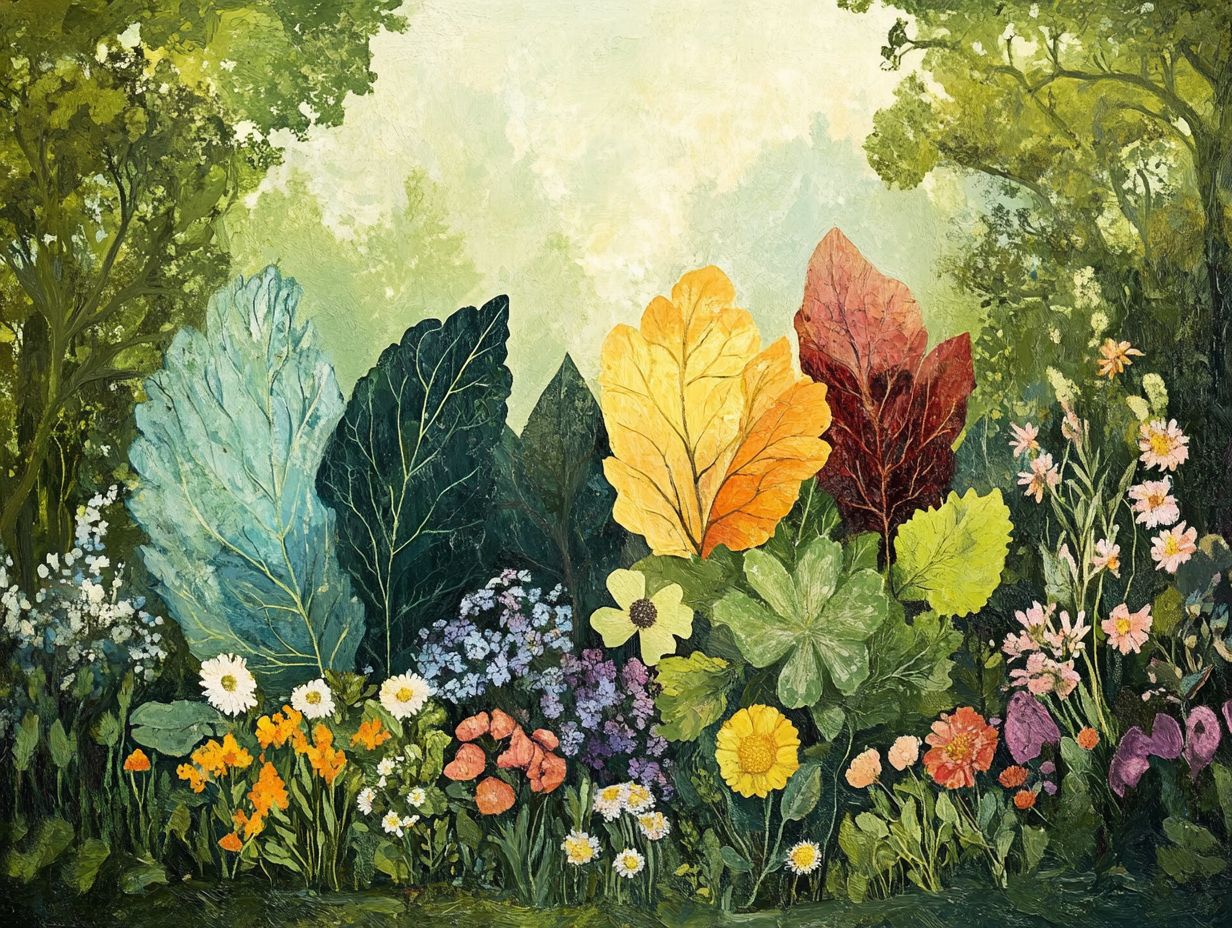
Chickweed is a tender, nutritious edible plant that thrives in spring, often gracing your gardens and wild areas. Its delicate leaves and stems lend a mild flavor to your salads and dishes and pack a treasure trove of vitamins and minerals, making it a prized find for foragers.
This leafy green is abundant in vitamins A, C, and K, along with a variety of antioxidants, which are substances that help protect your body from damage. Identifying chickweed is easy; its small white flowers and opposite leaves create a distinctive look that s hard to miss.
If you’re eager to include it in your meals, enjoy chickweed raw in salads, blended into smoothies, or cooked like spinach in soups and saut s alongside wild asparagus and morel mushrooms. Its versatility elevates your dishes while delivering a wholesome nutritional boost, making it a valuable ingredient in both home kitchens and the foraging community.
Beyond its culinary merits, chickweed plays a vital ecological role in supporting local wildlife, underscoring its significance in the natural world.
5. Fiddleheads
Fiddlehead ferns the young, coiled fronds of ferns make a striking appearance each spring, inviting you to gather their tender, edible shoots. Their unique flavor, reminiscent of asparagus and spinach, adds an extraordinary touch to your culinary creations while embodying the cherished practice of foraging.
As the season unfolds, typically between late April and early June, you can find these delicacies in damp, shady spots, just waiting for your attentive gaze. Recognizing the right species is essential since some can be toxic if consumed raw. This applies to wild mushrooms like oyster mushrooms and morels as well. Harvesting should be approached thoughtfully to ensure the sustainability and health of the local ecosystem.
After collecting fiddlehead ferns, prepare them in various ways steam, saut , or even pickle them to let their distinctive taste shine. Nutritionally, they re packed with vitamins A and C, along with omega-3 fatty acids, making them a wholesome addition to your seasonal dishes.
By integrating these vibrant greens into your foraged meals, you not only elevate the flavor profiles but also forge a deeper connection with nature s bounty.
What Is Foraging and Why Is It Beneficial?
Foraging is the art of seeking out and gathering wild food resources, a practice that invites you to identify food plants, mushrooms, and herbs that can help you feel better, including plants like dead nettle and garlic mustard. This ancient skill connects you to nature in a rewarding way. It champions sustainable eating practices, enhances dietary diversity, and grants you access to nutrient-rich foods that can significantly benefit your health and well-being.
When you engage in foraging, you uncover a treasure trove of wild foods flourishing in your local environment. Take dandelion greens and miner’s lettuce, for instance; these little powerhouses are brimming with vitamins A, C, and K, making them perfect for salads or soothing teas. Likewise, foraged mushrooms like chanterelles and morels bring unique flavors to your culinary creations while contributing valuable nutrients and antioxidants. To get started on your foraging journey, check out the top 5 wild edibles for beginners.
The act of foraging invites you to break away from your routine, fostering a mindful relationship with food. It also promotes sustainability by reducing your dependence on commercial agriculture, encouraging the use of local and seasonal ingredients. Wildcrafting means gathering plants from the wild, and this reconnection with nature and the rhythms of the seasons not only enhances your mental well-being but also brings a profound sense of fulfillment that comes from gathering your own food.
What Are the Best Practices for Foraging?
When you set out on a foraging adventure, adhering to best practices is essential for ensuring both safety and sustainability. This means thoroughly identifying edible plants such as wild garlic and henbit, understanding their habitats, and respecting local laws and regulations concerning wildcrafting. By doing so, you foster a responsible approach to gathering natural resources.
Equipping yourself with a reliable field guide can significantly enhance your ability to identify plants accurately, especially when it comes to distinguishing between safe and toxic species. Familiarizing yourself with the local plants not only enriches your foraging experience but also helps you distinguish between safe and toxic plants.
Practicing sustainable harvesting techniques is key; this means only gathering what you can use and leaving the rest to grow. This approach protects the ecosystem and ensures the longevity of your foraging endeavors.
Prioritizing safety when identifying wild plants is crucial. Many edible varieties have dangerous look-alikes, so a cautious eye is your best ally in the wild.
What Are the Different Ways to Use Foraged Plants?
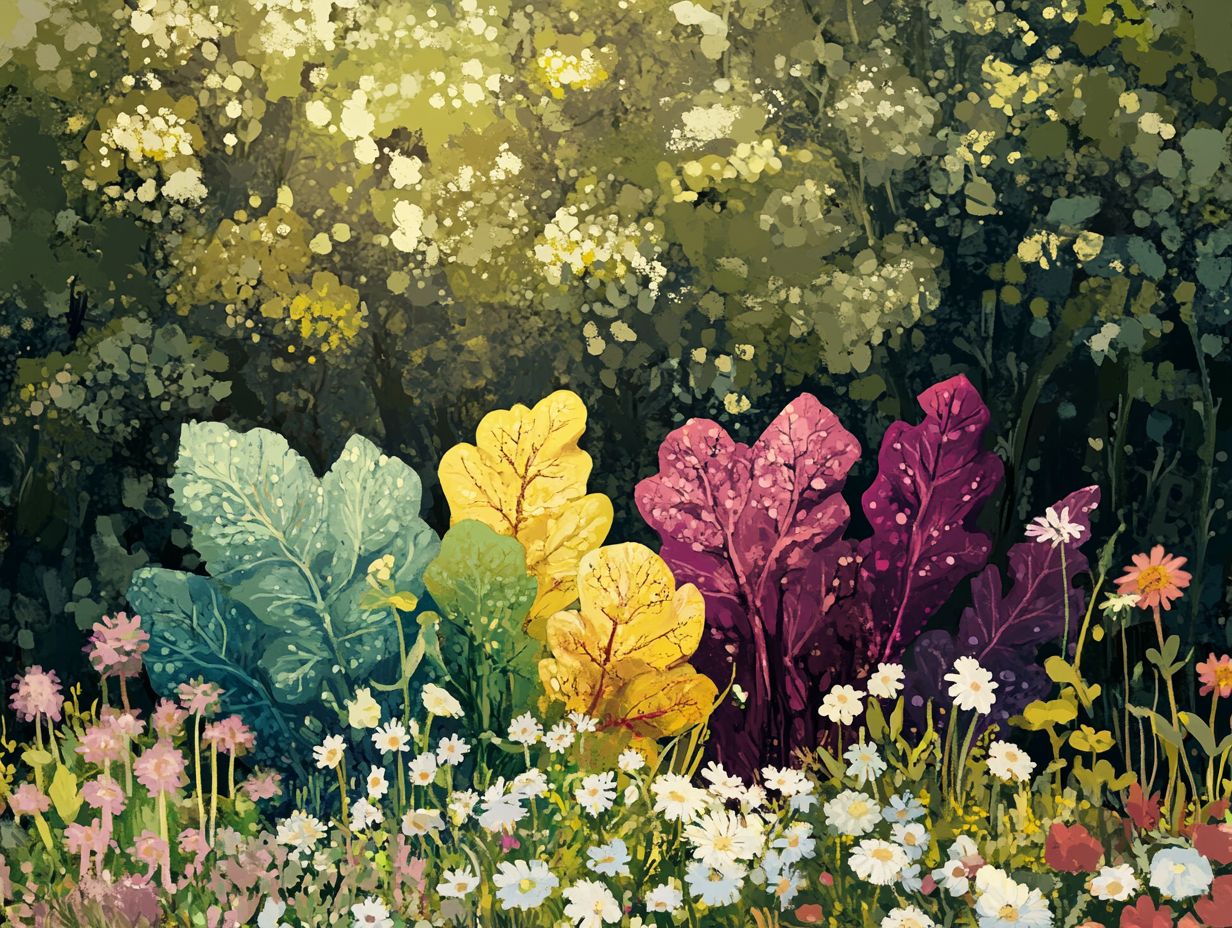
Foraged plants offer a world of possibilities, from enhancing the flavors of your culinary creations to crafting herbal remedies and natural health solutions. The versatility of these wild resources, including food plants, gives you the power to incorporate them into your everyday meals, fostering a healthier lifestyle and a profound appreciation for nature s generosity.
Take dandelion leaves, for instance. Often overlooked, these vibrant greens can be harvested in spring and sautéed for a nutritious boost in salads or blended into a refreshing dandelion tea that may aid digestion. Then there’s stinging nettle, packed with vitamins A and C; when cooked into a hearty soup, it not only adds a unique flavor but also acts as a natural antihistamine. For a deeper exploration, check out spring foraging: easy edibles for beginners to discover more wild ingredients like garlic mustard that you can include in your dishes.
These cooking methods turn foraged ingredients such as morel mushrooms and oyster mushrooms into delightful dishes while also showcasing preservation methods like drying or freezing, ensuring you can savor these wild treasures throughout the year. Don t miss out on the chance to enhance your meals with these amazing greens!
How Can One Safely Identify and Harvest These Plants?
Safely identifying and harvesting wild plants is crucial for fully enjoying the benefits of wildcrafting. This journey begins with studying plant characteristics and using dependable plant guides. Often, it’s beneficial to seek guidance from seasoned foragers.
To elevate your foraging experience, pay attention to specific visual cues such as leaf shape and flower color. Understanding the natural habitat where these edible plants grow—whether in wetlands, forests, or meadows—will enhance your identification skills. Additionally, following 5 essential tips for foraging wild greens can be helpful as you may also encounter clover and plantain in these areas.
Embracing technology can streamline your foraging adventures. Numerous apps offer pictures and descriptions, allowing you to cross-reference what you find with ease. Education plays a vital role as well. Attending local workshops or engaging with community foraging groups can deepen your understanding of local flora, ensuring that your foraging practices remain safe and responsible.
Are There Any Precautions to Be Taken When Foraging?
Foraging is an exciting adventure that offers many rewards, but it s crucial to take necessary precautions to ensure both safety and sustainability. Familiarize yourself with the local environment, steer clear of areas treated with pesticides, and be mindful of any personal allergies.
By doing so, you can savor the bounty nature offers without unnecessary risks, including avoiding dead nettle and other potentially harmful plants. Understanding the specific habitats where edible plants flourish, such as wetlands or woodlands, will greatly enhance your foraging journey.
It s essential to have identification guides on hand, giving you the power to confidently distinguish between edible and toxic species like henbit and yarrow.
Always prioritize ethical harvesting methods in your foraging practice. Collect only what you need and avoid overexploiting plants like ramp and fiddlehead ferns; this respects the ecosystem and ensures there s enough left to support local wildlife.
Recognize your physical limits. Foraging can be demanding, so knowing when to take breaks or seek assistance will contribute to a more enjoyable and fulfilling adventure in the great outdoors. Consider joining a Gather & Root Course for expert guidance.
What Are Some Other Plants That Can Be Foraged in Spring?
Spring is an exciting treasure trove filled with edible delights, brimming with a variety of edible plants that extend far beyond just Dandelions and Chickweed. Think Stinging Nettle, Miner’s Lettuce, Wild Violets, and the ever-popular Fiddlehead Ferns. To learn more about these options and how to identify edible plants in spring, encountering wild asparagus or cattail during your adventures can further enhance your culinary experience.
Take Stinging Nettle, for instance; it can easily be transformed into a nutritious soup or blended into a vibrant pesto. Yarrow can also be added for flavor. Miner s Lettuce, with its crisp texture, makes for a refreshing salad addition, loaded with vitamin C and iron.
Wild Violets? They are perfect as charming garnishes or can be candied for an exquisite treat, bringing both elegance and antioxidants to your dining experience. You can also garnish dishes with clover flowers for an added touch.
And let s not forget about Fiddlehead Ferns. Their unique, slightly nutty flavor shines when lightly steamed and tossed with olive oil, enhancing their delicate taste. Exploring these ingredients, along with morel mushrooms, not only elevates your dishes but also deepens your connection to the natural world, infusing each gathering and preparation with profound joy.
Frequently Asked Questions
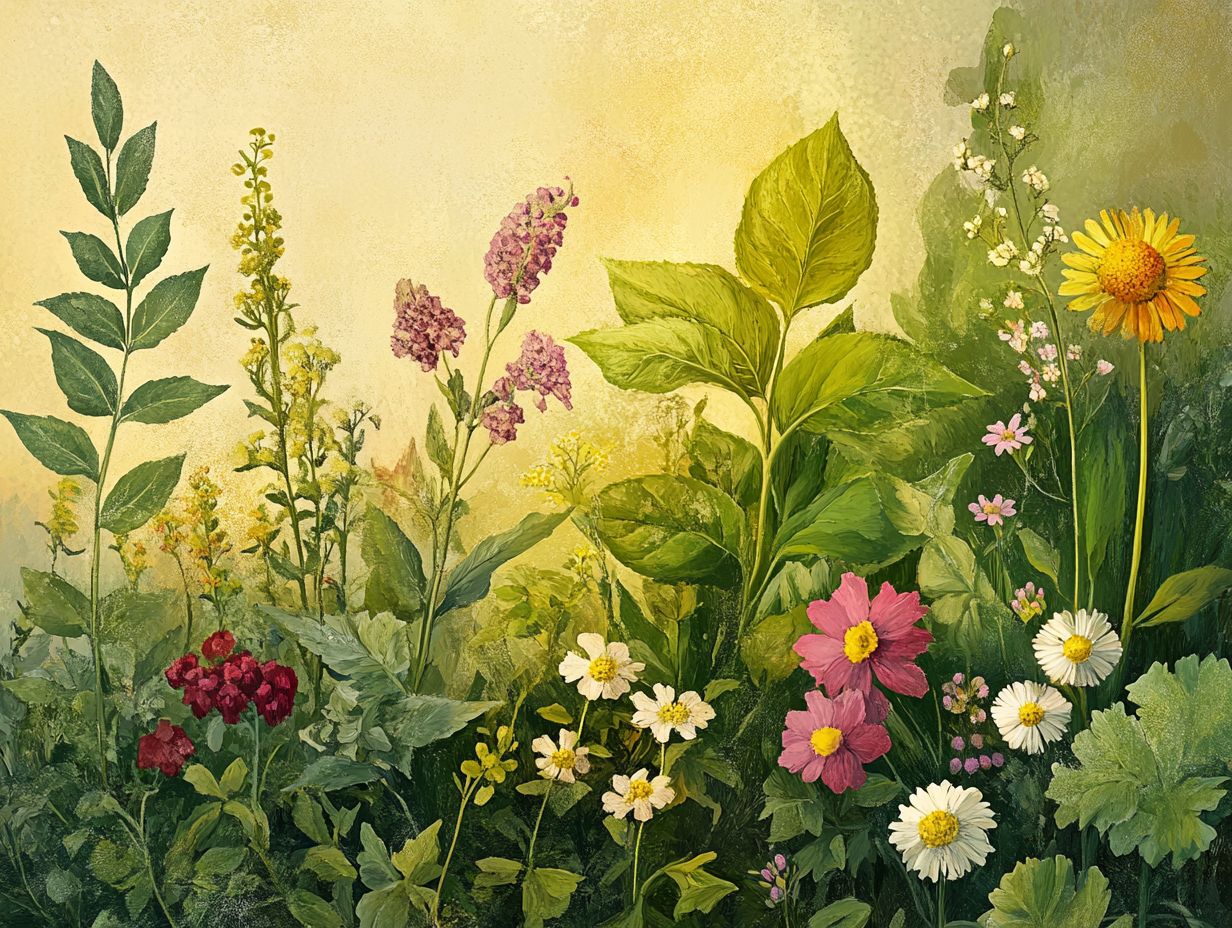
What are the 5 essential plants to forage in spring?
The 5 essential plants to forage in spring are stinging nettle, dandelion, chickweed, garlic mustard, and wild onion. For those interested in winter foraging, be sure to check out 5 wild plants to forage this winter. Including plantain and yarrow is also beneficial.
Ready to start foraging? Grab your gear and head into the great outdoors!
Why should I forage for plants in spring?
Spring is the best time to forage for plants, as many edible and nutritious options are in season and at their peak growth. For instance, exploring the top 5 edible flowers to gather in spring can enhance your foraging experience, making them easier to find and identify.
What are the benefits of foraging for these 5 essential plants?
These 5 essential plants are not only delicious; they also offer a range of health benefits. For instance, stinging nettle is rich in iron and vitamins, while dandelion is known to improve digestion and liver function. For more, check out the top 7 wild greens to harvest in spring.
Chickweed is high in antioxidants. Garlic mustard has antibacterial properties, and wild onion is a great source of vitamin C. You can also find plants that can help with health issues, such as yarrow.
Can I forage for these plants in my backyard or do I need to go into the wilderness?
Discover the delicious plants waiting for you in your backyard! These plants are commonly found in lawns and gardens. Just make sure your yard is free from pesticides and other harmful chemicals.
Also, consider looking for cleavers and dead nettle as well.
Is it safe to forage for plants in the wild?
Foraging in the wild can be safe if you know how to identify the plants you are looking for. This includes ramp, morel mushrooms, and 5 unique wild edibles like oyster mushrooms.
It is always best to forage with an experienced forager or consult a guidebook before consuming any wild plants.
What are some ways to use these 5 essential plants in cooking?
You can use stinging nettle in soups, stews, and teas. Dandelion works well in salads, stir-fries, and pesto.
Chickweed can be added to smoothies or used as a garnish. Garlic mustard is great for pasta dishes and sauces, while wild onion shines in soups, frittatas, and as a seasoning.
Don’t forget to incorporate henbit and fiddlehead ferns into your meals for even more variety!

